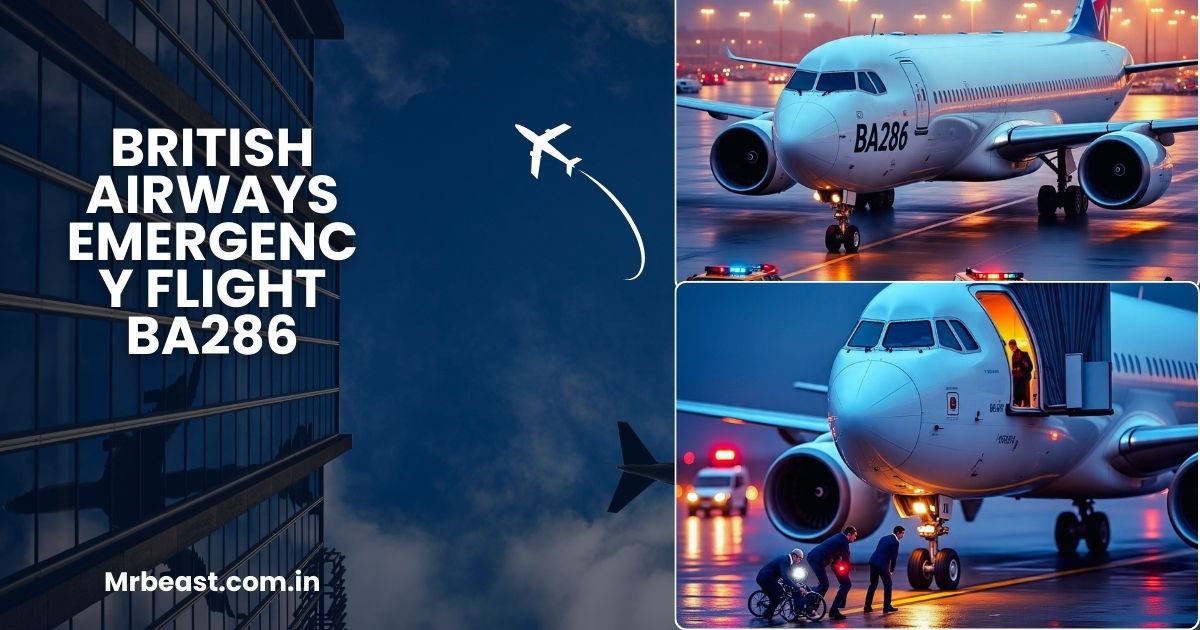Introduction
On 25 October 2016, passengers onboard British Airways Flight BA286 faced an unexpected emergency that forced the aircraft to divert from its original transatlantic route. The flight, which was scheduled to operate between San Francisco International Airport and London Heathrow, was operated using an Airbus A380, one of the largest passenger aircraft in the world. During the journey, multiple crew members suddenly fell ill, leading to a precautionary emergency landing in Vancouver.
This incident highlights the importance of strict safety procedures in [[Aviation safety]], the role of airline crew training, and the readiness of ground services to respond to emergencies.
About British Airways Flight BA286
Flight BA286 is a daily service operated by [[British Airways]], connecting [[San Francisco International Airport]] (SFO) in the United States to [[London Heathrow Airport]] (LHR) in the United Kingdom. The route is a significant link between North America and Europe, serving both business and leisure travelers.
The aircraft type used on this route was the [[Airbus A380]], known for its capacity to carry more than 500 passengers. On the day of the incident, the plane was carrying nearly 400 passengers along with 25 crew members.
The Incident Begins
Approximately two hours into the flight, while the aircraft was flying over Canada, several crew members began feeling unwell. Some passengers also reported a strange odor near the cabin and galley areas.
The captain and first officers, trained under strict [[Airline]] emergency protocols, immediately assessed the situation. Although there was no immediate threat to the engines or flight systems, the health of the crew raised serious concerns. In aviation, even minor signs of unusual fumes or illness are treated with maximum caution, as safety always comes first.
The Diversion Decision
Initially, the crew considered diverting to [[Calgary International Airport]], which was closer. However, Calgary did not have the infrastructure to handle an Airbus A380. For this reason, the flight crew decided to continue to [[Vancouver International Airport]] (YVR), which had the facilities and runways necessary for such a large aircraft.
The pilots declared a PAN-PAN, which is an international urgency signal indicating a problem that is not immediately life-threatening but requires priority handling. In preparation for landing, the aircraft carried out fuel dumping, a standard procedure used by large aircraft like the [[Airbus A380]] to reduce weight before landing.
The Emergency Landing
The aircraft touched down safely at Vancouver International Airport late at night. Emergency medical teams and airport fire crews were already on standby. Upon arrival, all 25 crew members were taken to nearby hospitals for precautionary checks, while passengers were kept onboard until the cabin was secured.
Fortunately, no serious injuries were reported, and the passengers were later disembarked safely. The incident was officially recorded as a “serious incident” in aviation terms, but without any aircraft damage.
Passenger Experience
Many passengers expressed confusion and anxiety during the incident. Seeing emergency personnel in protective masks boarding the aircraft added to the tension. However, most also praised the professionalism of the British Airways crew, who remained calm and followed all safety procedures.
Passengers were accommodated in Vancouver hotels while British Airways arranged onward connections to London. While delays were inconvenient, the safety of all those onboard was preserved.
Investigation and Official Response
Following the diversion, [[British Airways]] released an official statement emphasizing that safety is its top priority. The airline explained that crew members had been taken to hospitals for medical evaluation and that all had been discharged shortly afterward.
Authorities conducted an investigation into the reported odors and symptoms. While the exact cause was never fully confirmed, the event was considered an example of a possible fume event, where unusual air contamination in the cabin can affect passengers or crew.
Aviation Safety Lessons
The BA286 diversion underlined several critical lessons in [[Aviation safety]]:
- Infrastructure Limitations: Not all airports can handle large aircraft like the [[Airbus A380]]. Pilots must carefully select diversion airports based on safety and logistics.
- Medical Emergencies at Scale: When multiple crew members become unwell, an airline must prioritize immediate medical evaluation.
- Passenger Communication: Clear updates are vital to reduce fear and confusion among travelers.
- Cost vs. Safety: Diversions are extremely expensive for airlines, but safety is never compromised.
Broader Context
This incident is not unique. Similar situations have occurred across the aviation industry, where aircraft were diverted due to technical faults, passenger health emergencies, or suspected smoke and fumes.
The role of cabin air systems and their safety has been widely studied, particularly after events like BA286. While such cases are rare, they demonstrate the effectiveness of strict global safety standards established by organizations such as the [[International Civil Aviation Organization]].
Impact on British Airways
For [[British Airways]], the emergency landing at Vancouver represented both a challenge and an opportunity. The airline faced logistical difficulties in rebooking hundreds of passengers and covering operational costs. However, it also showcased the professionalism of its staff and its commitment to passenger safety, which is vital for maintaining trust in international aviation.
Conclusion
The emergency diversion of British Airways Flight BA286 remains a notable event in modern aviation history. What began as a routine long-haul journey quickly turned into a demonstration of how airlines, airports, and medical services respond to emergencies.
Thanks to the professionalism of the flight crew and the readiness of Vancouver International Airport, the incident concluded without injuries. For passengers, it was a reminder that while emergencies can happen, the aviation industry’s dedication to safety ensures that risks are minimized and lives are protected.
In the larger context of [[Aviation safety]], BA286 reflects the industry’s core principle: when in doubt, divert and protect passengers at all costs.










